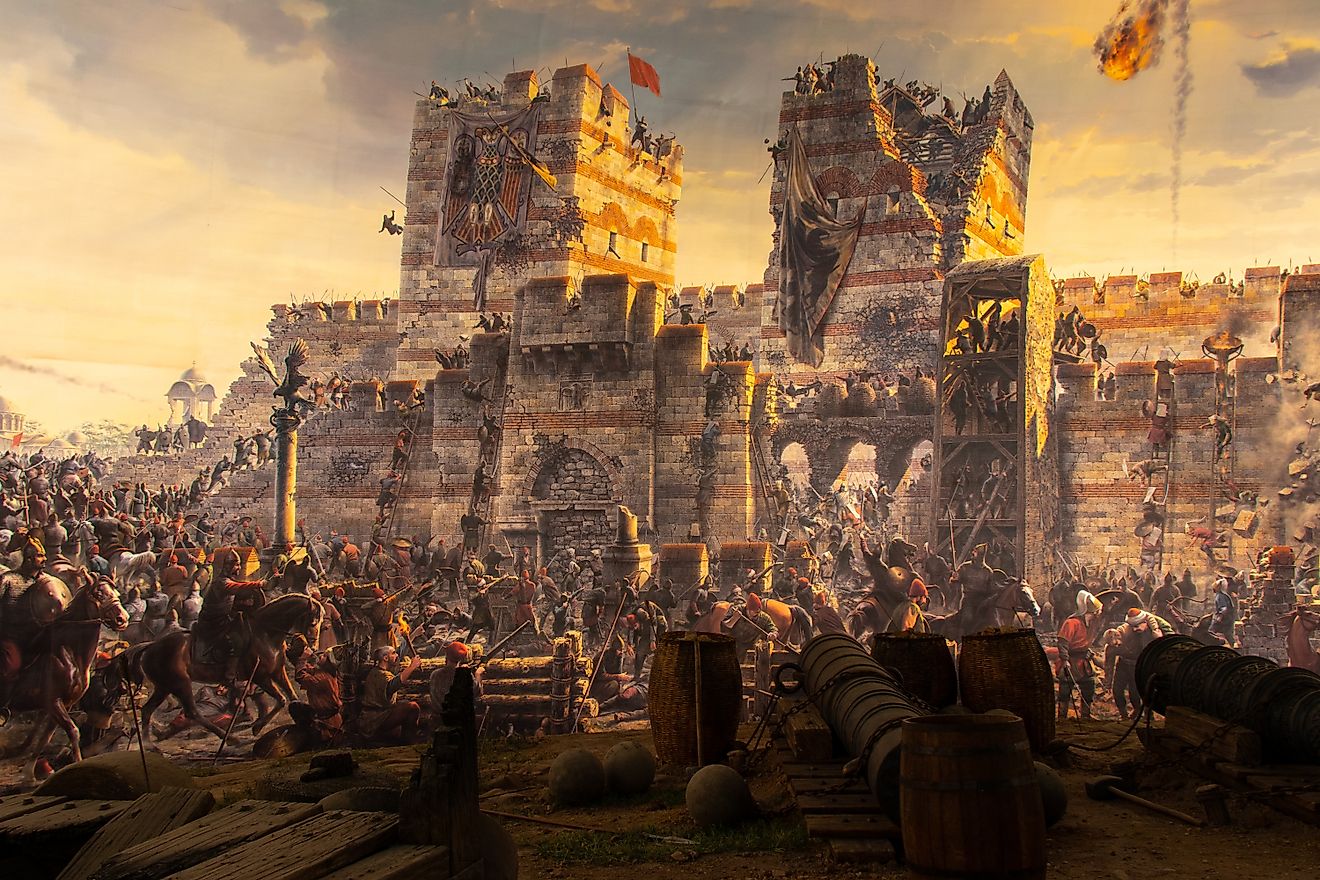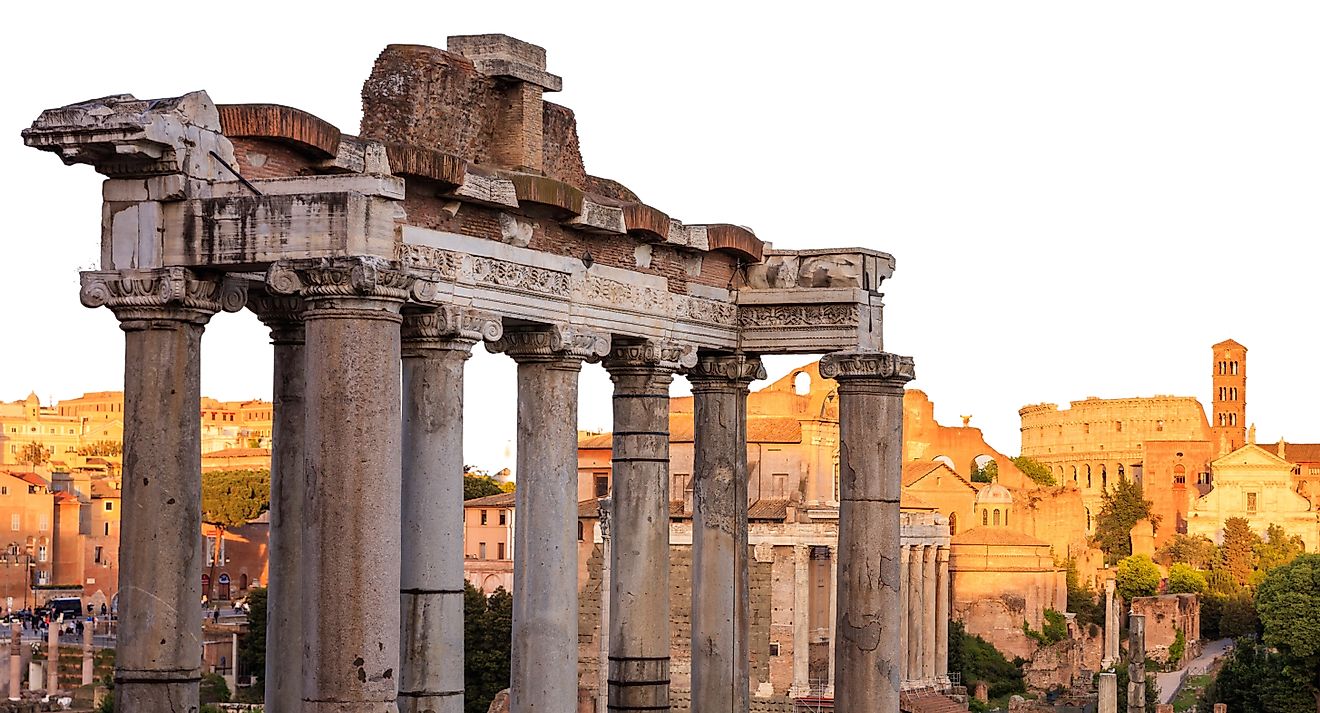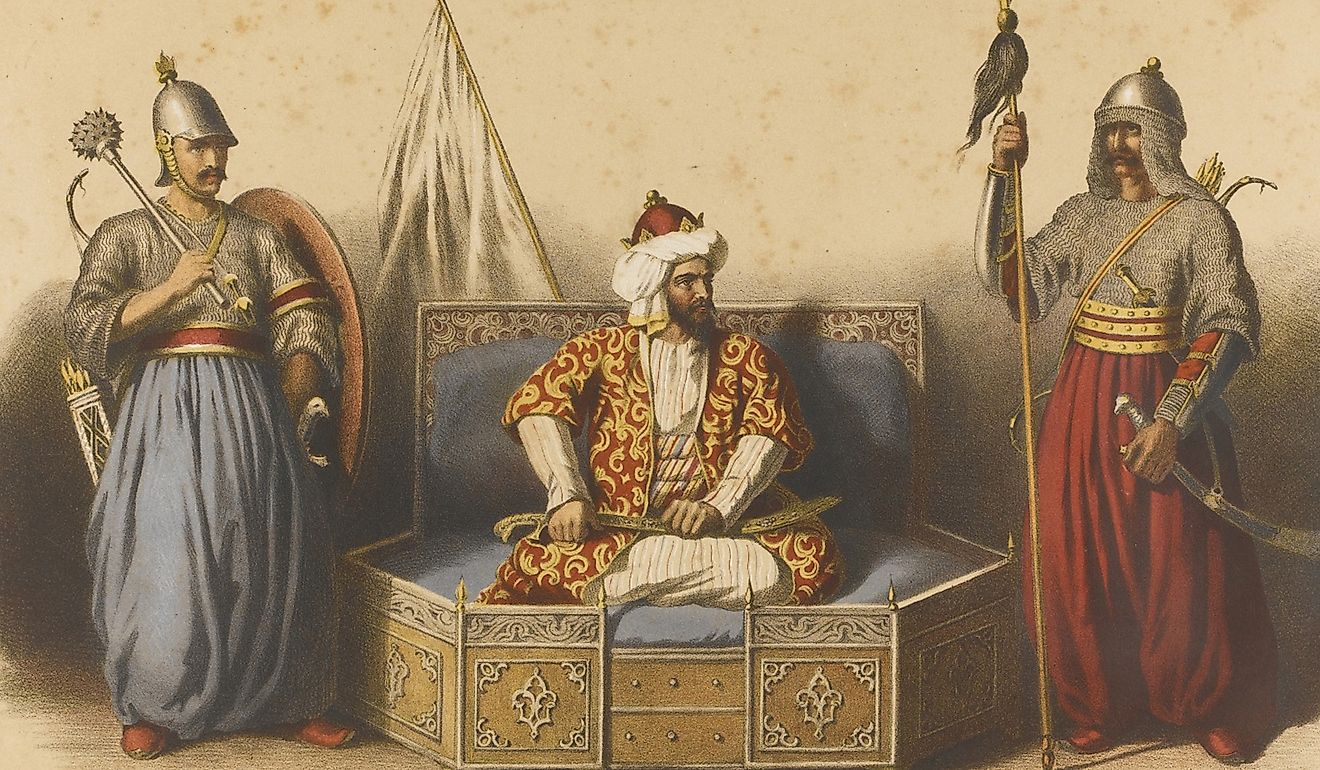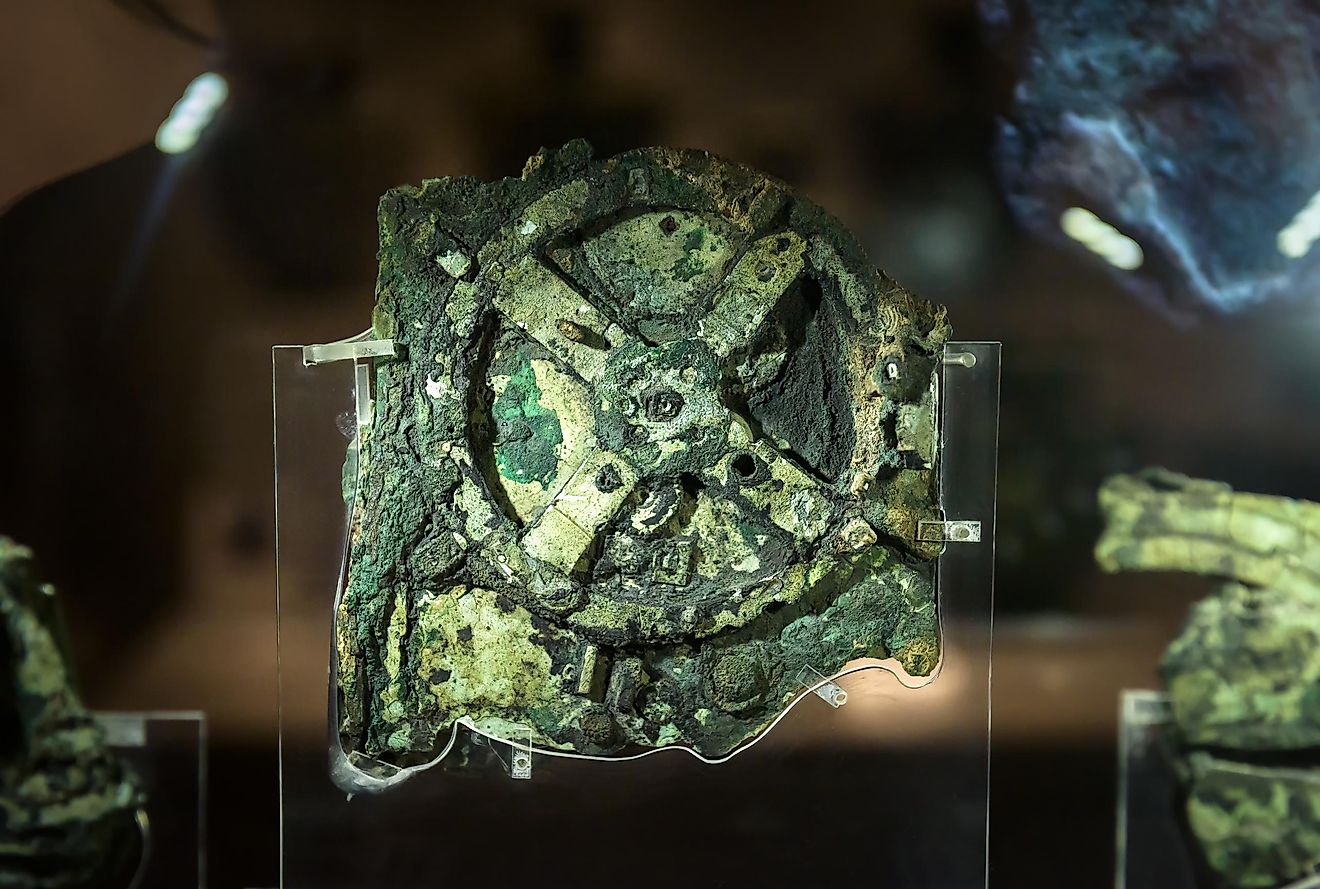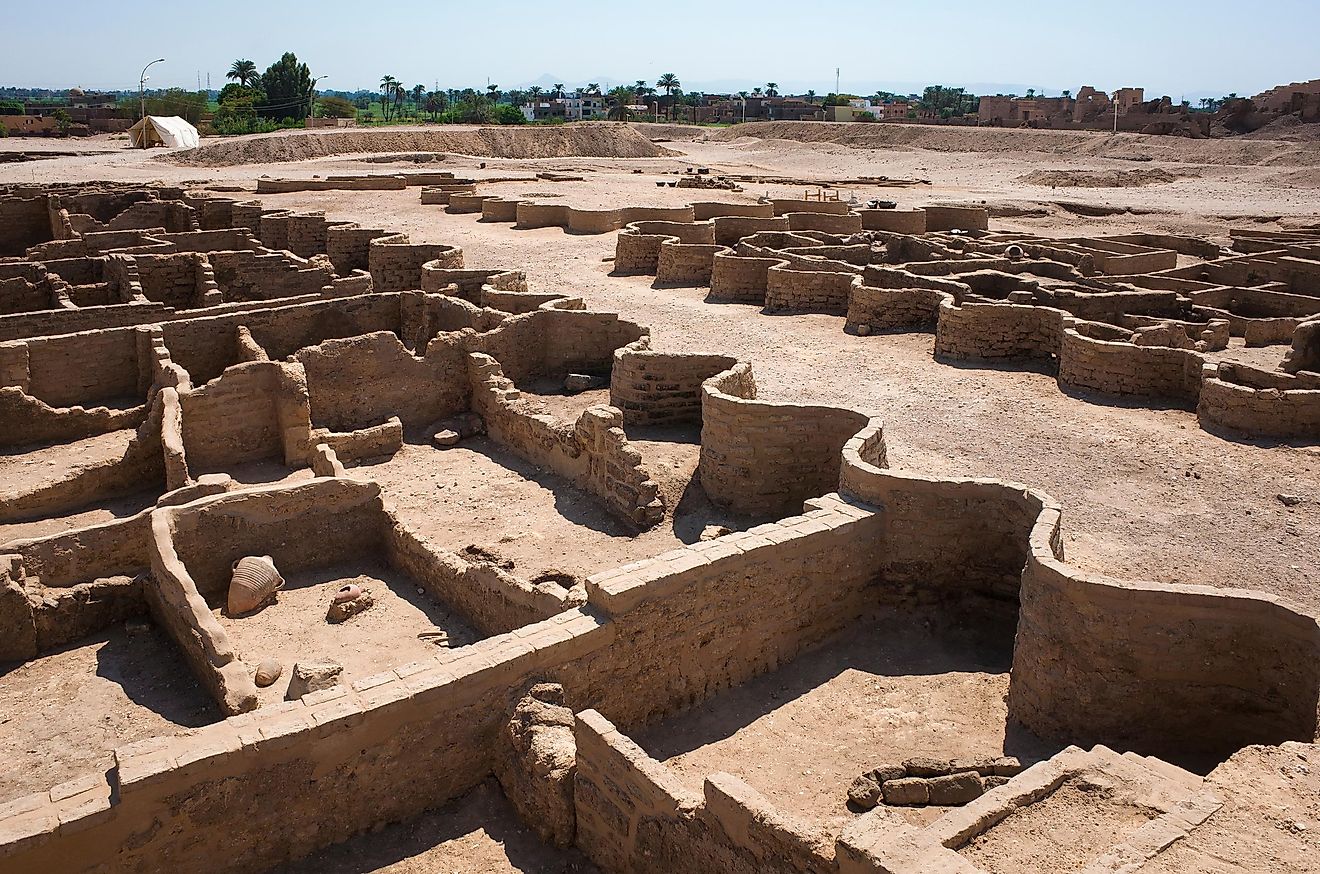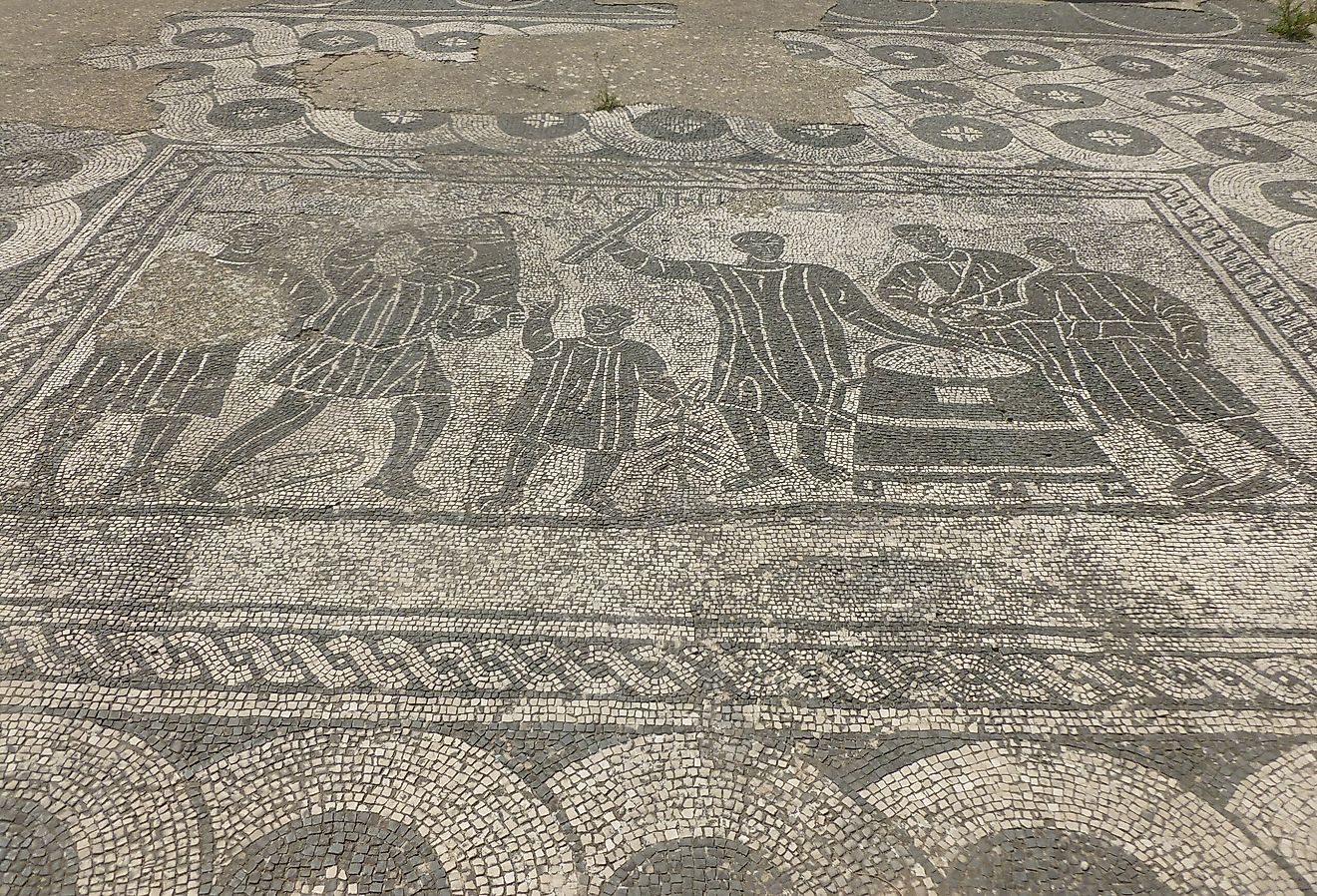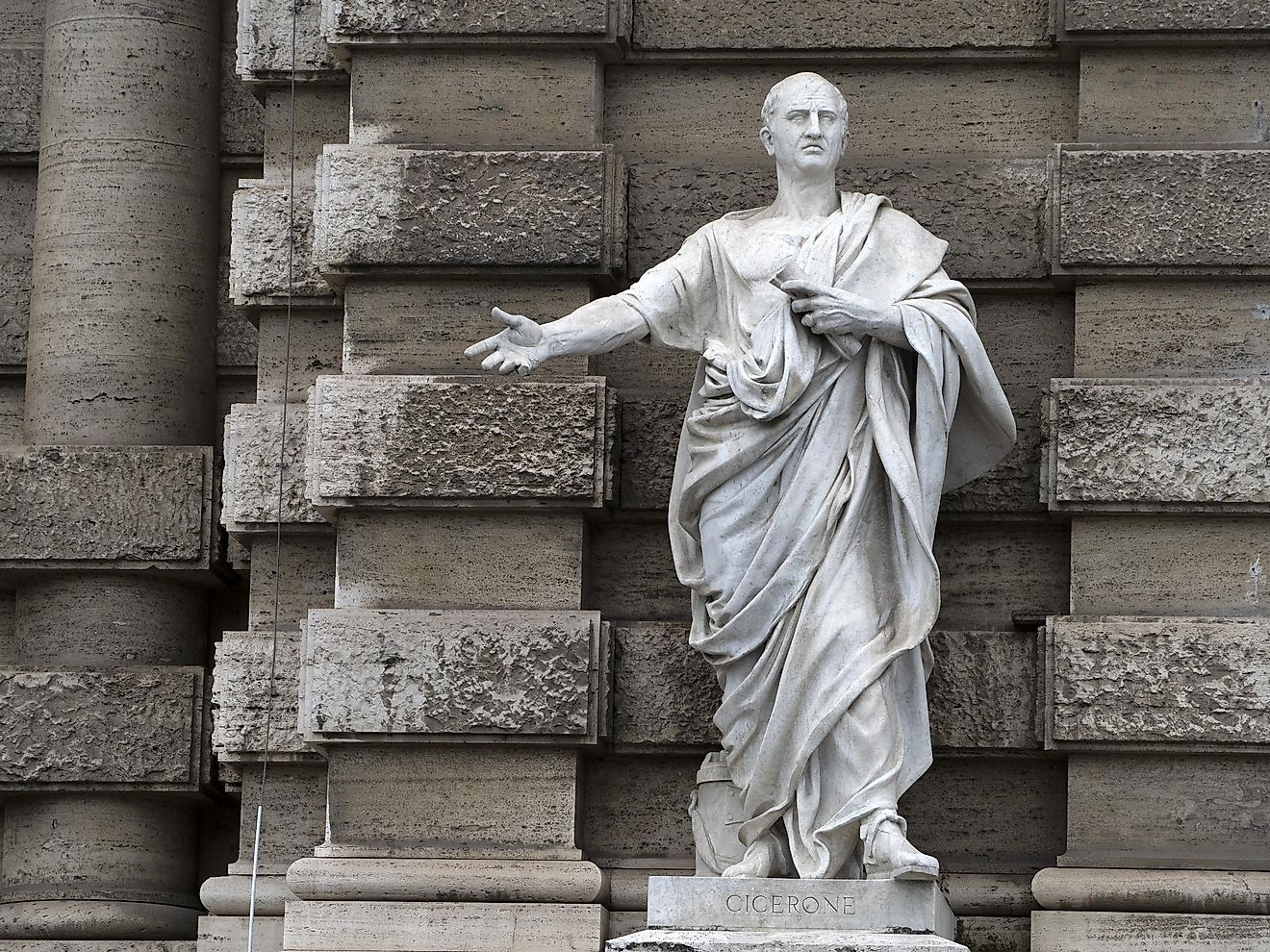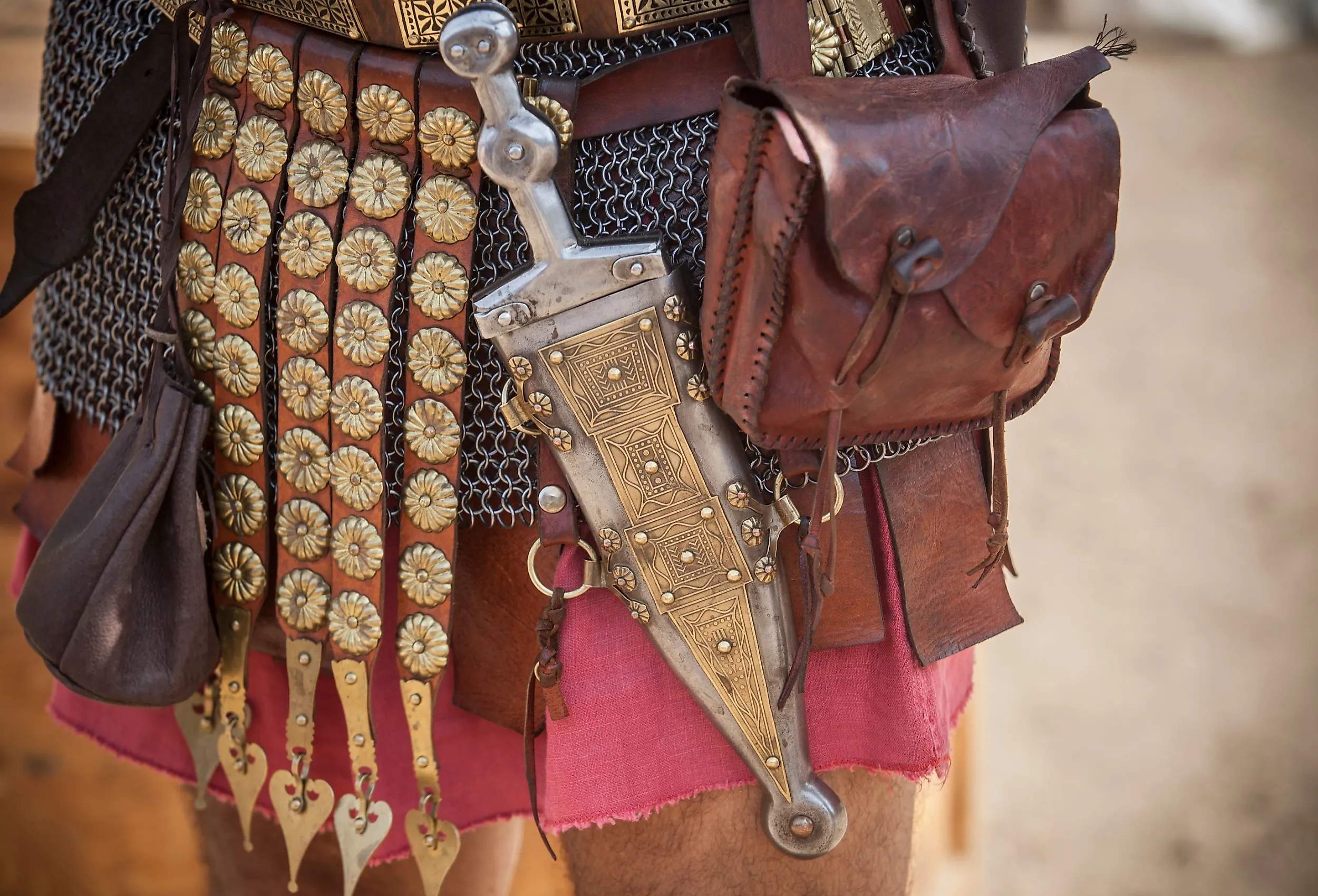
The Deadliest Ancient Weapons Ever Created
Many tools and contributions in warfare have changed ancient civilizations forever. Ancient weaponry has prompted historians and researchers alike to ponder what happened in the early days. While these tools of war would likely not match up to modern development, there will always be a historical lens to understand how far past civilizations had come in creating powerful and complex equipment. These ancient, deadly weapons from before 500 AD will surprise just about anyone!
Sarissa
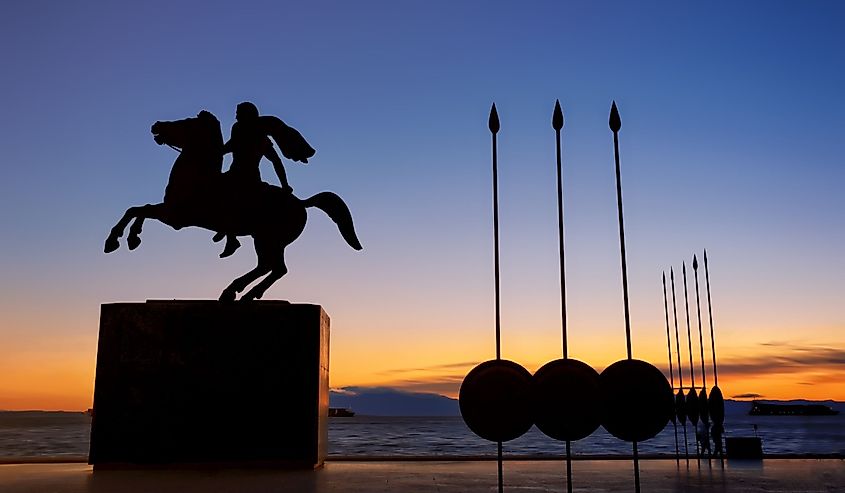
The sarissa was a Macedonian long spear or pike brought into existence by Philip II of Macedon and used by his son Alexander the Great. Originating in the 4th century BCE, the spear was a symbol of great strength, with its cultural and historical usage by phalanxes in the form of spike walls. This tool was a key training weapon for Macedonia's control of Greece and Thrace. Alexander the Great eventually utilized the sarissa to help promote personal conquests as he conquered Egypt, the Pauravas, and other areas of importance.
This deadly weapon was considered to be the "backbone" for phalanx violence in major conflicts, such as the Battle of Gaugamela or the Battle of Chaeronea, where its use increased the chance of enemy weakness due to its 7.5-meter length. The sarissa was known to be a hoplite force among Greeks because of its significance as both an offensive and defensive terrain asset. Scholars argue that the sarissa stood as a cavalry advantage for Macedonian infantry and spear-holders who wanted to have leverage over the Persians. While many believe that the spear could easily be replaced in later years, the sarissa remains a major contributor in the Classical Era.
Recurve Bows
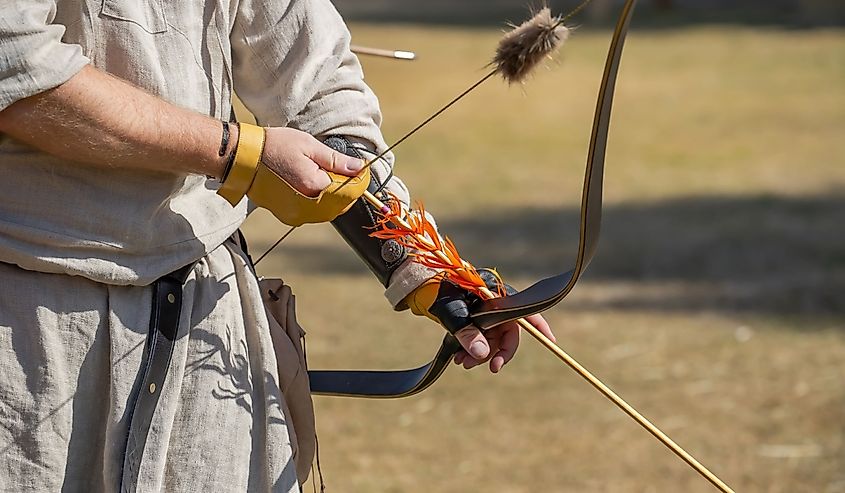
Recurve bows, introduced in the 1st millennium BCE by Assyrians as a competitor to traditional longbows, were a simplistic yet powerful armament used by Steppe Nomad tribes such as the Scythians, Huns, Xiongnu, Parthians, and later Mongolians. The bows were usually compact and deadly in many ways by shooting arrows while on horseback, giving users an advantage against enemies without robust defenses. The construction of these weapons, using materials like horn, sinew, and common wood, made horse riders a more formidable force.
Nomads of ancient Steppe regions believed that recurve bows would be necessary for advancing military tactics and pushing back invaders. With the use of curved architecture, such weapons could make it easier to handle while maintaining high-speed rides across the battlefield. The bows were also used to slow enemies by mobilizing and engaging as needed ("hit-and-run" tactics) without being overwhelmed by ancient Chinese or Roman threats. As of today, Olympic competitors use recurve bows in a safer way to win tournaments!
Urumi
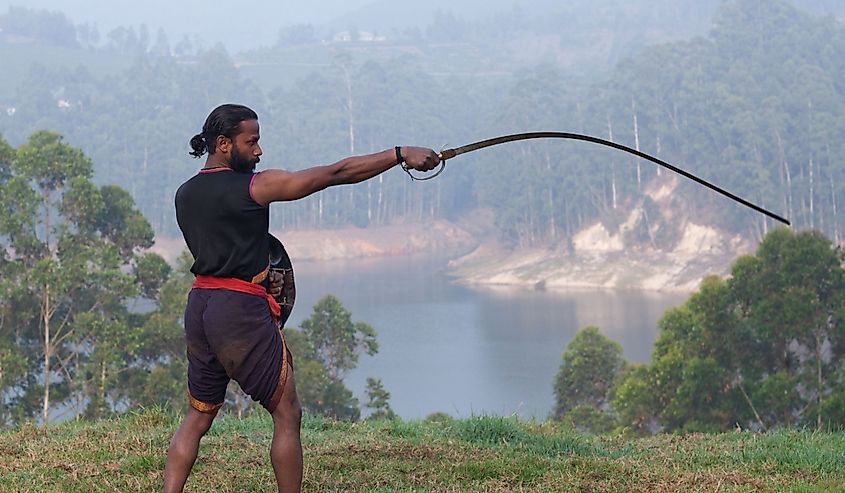
The urumi, first created in Kerala around the 3rd century BCE, was a dangerous item used by ancient Indians. Also referred to as the "whip sword," the urumi was used as a secretive waistline attachment to scare outsiders and those who posed a threat to communities. The mystery behind it intrigues theorists and skeptics, who question why a bizarre tool was created in the first place. Many still dispute its origins and the purpose it served as a weapon.
It is known that the urumi was formally established as a self-defense element of martial arts, or "Kalaripayattu" among locals. However, its unpredictable nature and the ability to strike down bandits from afar made it a threatening aspect of the Sangam period. What makes urumis stand out is their shield-wrapping mechanisms to entrap victims. It was quite a relic for warriors who needed to strike down from afar without getting too close, although the use of it as a last resort tool in warfare made many want to avoid using it unless truly necessary. Despite its intended uses, it remains a curious artifact among historians as a modern self-defense weapon in India and Sri Lanka.
Roman Pilum
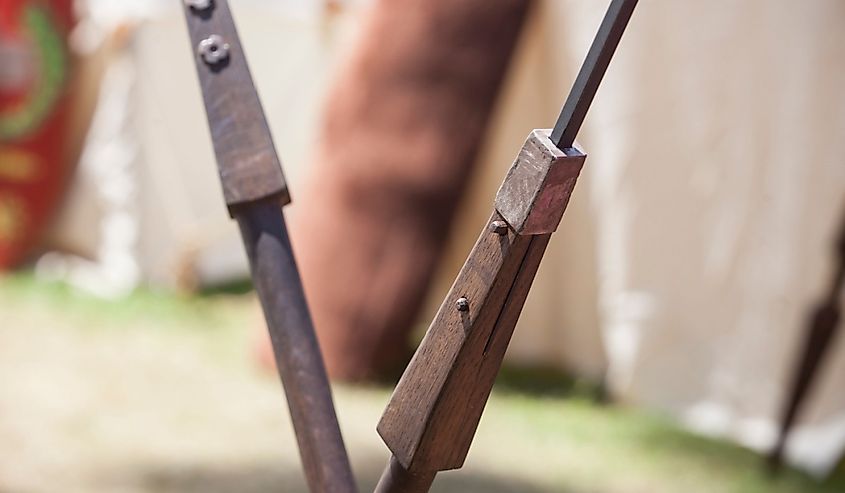
The Roman pilum, first introduced in 400 BCE, was meant to help Roman legions pierce through shields and render oppositional defenses useless. As a pyramidal throwing spear that could withstand hazards of all kinds, the ancient Romans relied extensively on the pilum before resorting to swords as a backup option. This heavy javelin made it much easier for Romans to stand their ground by throwing it across battlefields to halt enemies in their path and make them more vulnerable.
The use of the pilum was not only a physical battle tool to cut down defenses, but it was also designed with psychology in mind. By volleying these javelins as a surprise tool, it was efficient to thwart others and cause panic or confusion, while the bending of the spears made it harder to remove them from shields impacted by the throw. The use of the pilum stood as a testament to military superiority and intelligence in ancient times.
Khopesh

The khopesh was an ancient Egyptian weapon of warfare from around 2500 BCE that garnered lots of popularity. The Egyptian armies of back then relied on this sword for both aesthetics and violence. With a length of approximately two feet, it was easy for its users to disarm enemies who relied mainly on short spears or swords to commit to battle. Khopeshes had curved blades shaped like a "U" with sickle-shaped features, and were able to produce slashes rather than mere deep cuts.
Among those who used the weapon were Egyptians, Canaanites, Hittites, and other tribes from the Bronze Age. While they were initially made out of bronze in some cases, they later proved useful as a tool made of iron. Its impacts were most visible when elite soldiers and royal Egyptians prevented civil violence, and it was crucial for chariot warfare as well. There are even cases in which the khopesh was instrumental to burial rituals. Overall, it was seen as a symbol of authority amongst ancient Egyptians.
Carthaginian War Elephants

Around the 3rd century BCE, Carthaginian war elephants were used to demonstrate pure crowd control and heavy defense. Most notable for its use during the Punic Wars by those such as Hannibal, these war elephants were able to trample over or crush siege engines or personnel with little effort, and were psychologically effective as they ushered in unrest to anyone who dared oppose the Carthaginians of the ancient Mediterranean region.
On one hand, the use of such creatures proved that tamed animals could be used as a means of warfare, but also made it clear that militarized success can be slower to achieve, as elephants can get tired or worn out without enough water and food. Despite this drawback, the Carthaginians believed that having elephants at their command would ensure that cavalry could push through Roman lines and smash down walls as a deadly presence.
Pugio
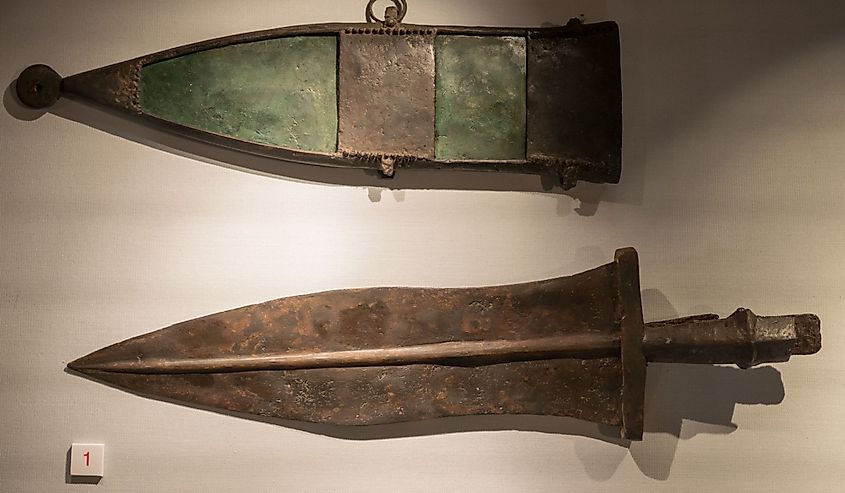
The pugio may seem like a small and underappreciated weapon at first, but it was quite a deadly tool in the hands of Roman soldiers. First employed between the 1st and 3rd century BCE, the military dagger was a favorite among legionaries who needed to make a stand with its broad blade points and sharp stabbing accuracy. Since it was easily concealable, it could be used in secrecy when soldiers had no backup plan or way to counter the enemy. It was also able to penetrate armor, making it a strong, unexpected asset.
Most scholars believe the pugio gained fame after it was used in the assassination of Julius Caesar, but it is still an ornate and destructive antique from even before ceremonial times. While the dagger remains an understudied ancient artifact to practitioners today, it has had plenty of uses to raise eyebrows for centuries and deserves a spot on this list!
Claw of Archimedes
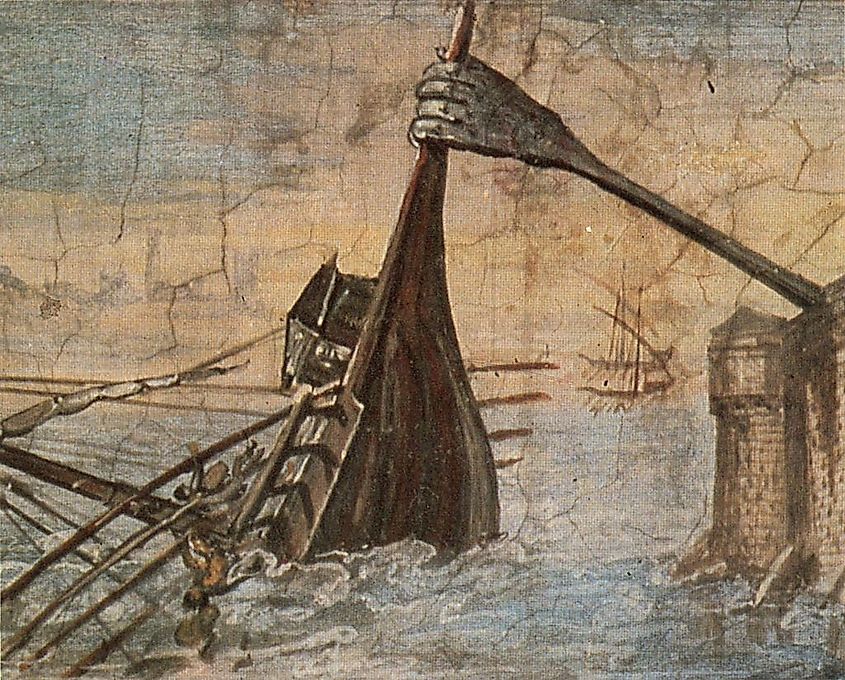
Around 214 BCE, the Claw of Archimedes was conceived to help Syracuse defend against Roman naval invaders during the Second Punic War. Created by a Greek mathematician of the same name, it was a mechanical crane device that could grab or lift up enemy vessels, and then smash them down against the waves, resulting in heavy damage or even capsized ship exteriors that forced the Romans to fall back.
While this seemed like a mundane effort at first, the use of the claw was impressive and innovative as a solution against outsiders. Many believe this was marine engineering at its finest, and being able to withstand buoyancy obstacles and still deliver results made it a marvel to historians for years to come. Even if applied sciences were not as prevalent back then, these types of ancient weapons were meant to be lethal and proved that the ancient Greeks knew how to think many steps ahead!
Conclusion
All of these deadly weapons demonstrated the importance of an ancient upbringing. No matter what type of city or country it was, there were always advancements made that helped civilizations conquer or take down enemies. Boasting battlefield prowess and military superiority, there is no doubt that the empires on this list had strengths that were able to shape and transform history as we know it.
